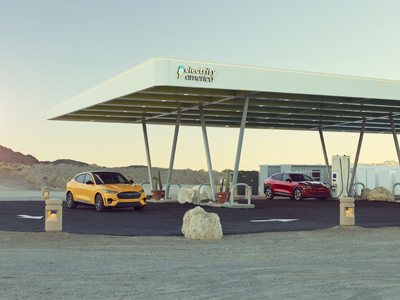Infrastructure changes will need to be made to accommodate EV growth. This includes the availability of convenient charging stations. Electrify America is taking steps to meet this challenge by investing more than $2 billion in EV charging infrastructure and education.
Barossa said Electrify America and Electrify Canada expect to double the number of chargers on the combined networks by 2026. He estimates approximately 90% of Californians live within 15 miles of an Electrify America fast charger, with 96% located within 25 miles.
“When evaluating alternative energy sources and uses, one has to consider all aspects of the problem, not just the localized issues such as direct emissions from a vehicle,” noted Freerks. “EVs may not directly emit greenhouse gas emissions as they are battery-powered, but all the other aspects of battery electric vehicles have associated emissions that are a part of the global environment even if not directly part of the local environment."
Although there are challenges to address while transitioning to EVs, many organizations are proponents of moving forward with the widespread adoption to protect air quality and deal with the impacts of climate change.
“Transportation is a major driver of harmful emissions entering the air,” said Barossa. He estimates that before the COVID-19 pandemic, up to 55% of total nitrogen oxide emissions were caused by the transportation sector.
“Research shows that an EV is typically responsible for lower levels of greenhouse gases (GHGs) than the average new gasoline car,” he said. “Through more widespread EV adoption, a more sustainable world with cleaner air is possible.”
To watch the SEMA webinar, visit the website.










Stacey Phillips Ronak